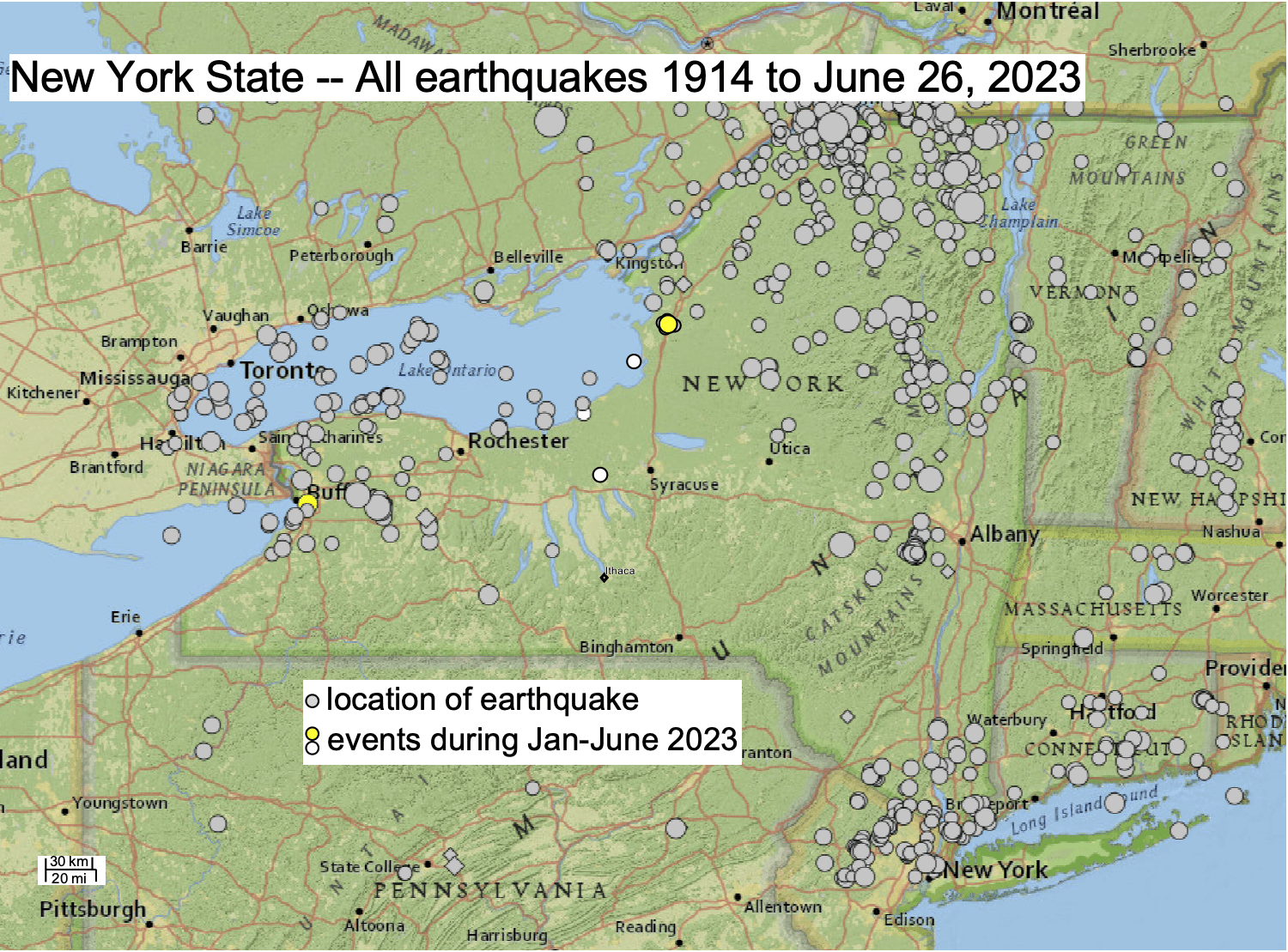Earthquake hazards in the New York City area Map depicting the extent of the Ramapo. Map showing Quaternary faults in the western US Note that most faults that can affect residents are. WEB As in most other areas east of the Rocky Mountains the best guide to earthquake hazard in the northeastern US Is probably the locations of the past. WEB Buffalo Sits Near Pretty Significant Fault Line A magnitude 38 earthquake that hit the. WEB The Clarendon-Linden fault system is a major series of fault lines in western New York state in the United States..
Earthquake hazards in the New York City area Map depicting the extent of the Ramapo. Map showing Quaternary faults in the western US Note that most faults that can affect residents are. WEB As in most other areas east of the Rocky Mountains the best guide to earthquake hazard in the northeastern US Is probably the locations of the past. WEB Buffalo Sits Near Pretty Significant Fault Line A magnitude 38 earthquake that hit the. WEB The Clarendon-Linden fault system is a major series of fault lines in western New York state in the United States..
**Earthquake Activity in New York and Surrounding Areas** In the past 24 hours, New York has experienced several earthquakes with magnitudes of 1.5 and above. According to the United States Geological Survey (USGS), there have been: * 3 earthquakes with magnitudes greater than 1.5 in the past 7 days * 4 earthquakes with magnitudes greater than 1.5 in the past 30 days The most notable earthquake occurred on Monday morning near Buffalo, New York. It had a magnitude of 3.8, making it the strongest earthquake recorded in the area in 40 years. The quake was felt in parts of Upstate New York and Canada. Another earthquake shook parts of Upstate New York and Canada on Sunday afternoon. This quake had a magnitude of 2.8 and was centered near Albany, New York. While these earthquakes have caused some concern, they are relatively common in the region. New York is located in a seismically active area, and it is not unusual for earthquakes to occur occasionally. If you feel an earthquake, it is important to remain calm and follow these steps: * **Drop, cover, and hold on.** If you are indoors, find a sturdy table or desk to get under. If you are outdoors, find a low-lying area away from buildings and trees. * **Stay away from windows and heavy objects.** * **Be prepared for aftershocks.** Aftershocks are common following earthquakes and can occur for days or even weeks after the main event. If you have any questions or concerns about earthquakes, please contact your local emergency management office.

Deep Geothermal Heat Research Cornell University
**4.8 Magnitude Earthquake Strikes New York City, Largest in 140 Years** **Published: April 5, 2024** A 4.8 magnitude earthquake jolted southern Connecticut and Long Island on Friday morning, marking the strongest seismic event to hit the New York City area in 140 years, according to the United States Geological Survey (USGS). The quake occurred at 10:20 a.m. EST and was centered near the town of Scarsdale, New York, in Westchester County. It was felt across the region, shaking buildings and offices in Manhattan, as well as on Long Island and in parts of New Jersey. While earthquakes are uncommon in the northeastern United States, they do occur. In February 2023, a 3.8-magnitude quake struck Buffalo, New York, which was the strongest recorded in the area in 40 years. According to the USGS, the 4.8 magnitude earthquake falls within the category of moderate severity. It is possible that aftershocks may occur in the coming days and weeks. Although there were no immediate reports of major damage or injuries, authorities are urging residents to be prepared for further seismic activity. Officials recommend having an emergency plan in place, securing loose objects, and staying informed about any updates from the authorities.
**Strongest Earthquake in 40 Years Strikes Buffalo, New York** On Monday morning, a 3.8-magnitude earthquake struck near Buffalo, New York. This is the strongest earthquake recorded in the area in the past 40 years. The earthquake occurred at approximately 6:15 AM and was centered in the suburb of West Seneca, east of Buffalo. Shaking was felt across the Buffalo area, including in the city itself as well as in neighboring communities. According to the United States Geological Survey (USGS), the earthquake had a depth of 1.2 kilometers (0.7 miles). There have been no reports of any injuries or significant damage. The USGS has reported that there have been no earthquakes of magnitude 5.0 or greater in the past 24 hours, and no earthquakes of magnitude 1.5 or greater in the past 7 days. **Historical Earthquake Activity in Buffalo** The Buffalo area has a history of seismic activity, although it is relatively infrequent. In October 1857, an intensity VI 6 earthquake shook Buffalo, causing walls to vibrate and objects to fall from shelves. Rumbling noises were also heard in Lockport. While Monday's earthquake was the strongest in 40 years, it is important to note that earthquakes of this magnitude are not uncommon in the Buffalo area. The USGS estimates that there is a 10% chance of an earthquake of magnitude 3.8 or greater occurring within the next year in the Buffalo region. **Response to the Earthquake** Local authorities are monitoring the situation and have not issued any evacuation orders. Residents are advised to follow safety precautions, such as securing any loose objects and having an emergency plan in place. The USGS continues to monitor seismic activity in the Buffalo area and will provide updates as they become available.

Comments